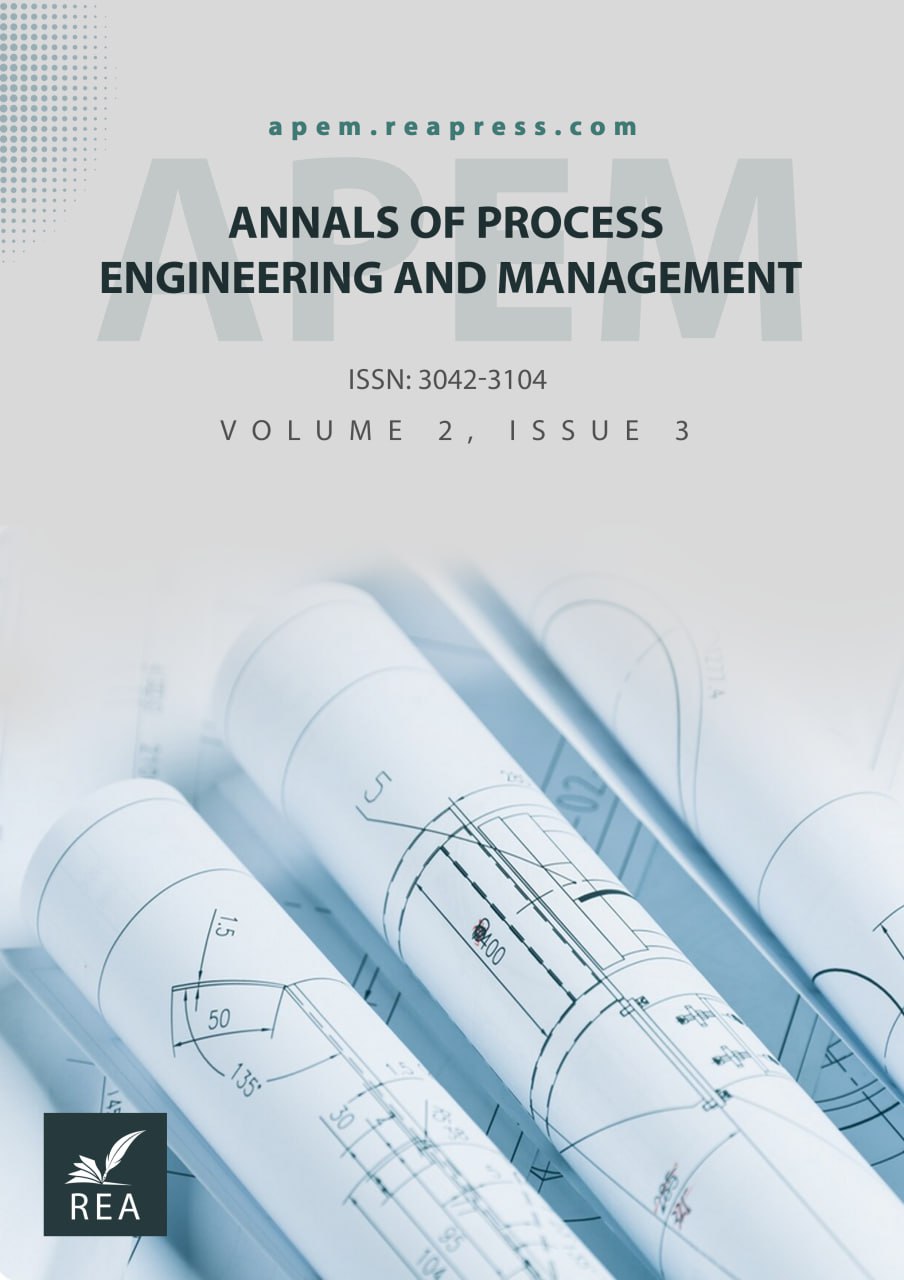A Comparative Study of the Processes of Bank Melli Iran with the APQC Reference Model Aiming to Develop an Optimal Organizational Structure
Abstract
Due to the rapid changes in the business environment, the shortening of product and service life cycles, and the necessity of technology integration at all levels of industry, the need for process orientation in organizations is clearly evident. Therefore, designing an organizational structure based on processes emerges as a fundamental necessity. This research aims to provide a comprehensive methodology for developing an optimal organizational structure, with a focus on Bank Melli Iran as a case study. Initially, the strategic components of the bank were analyzed, and then a list of Bank Melli’s processes was developed based on the American Productivity and Quality Center (APQC) standard. Following this, through interviews with bank experts, the existing processes were identified and analyzed. Additionally, a process architecture document was created, and the bank's legal and regulatory constraints were also examined. Finally, by aligning the identified processes with the results obtained from previous stages, an optimal organizational structure for Bank Melli Iran was proposed, which can lead to improvements in organizational efficiency and flexibility.
Keywords:
Organizational structure design, Process management, Bank Melli IranReferences
- [1] Whetsell, T. A., Kroll, A., & DeHart-Davis, L. (2021). Formal hierarchies and informal networks: How organizational structure shapes information search in local government. Journal of public administration research and theory, 31(4), 653–669. https://doi.org/10.1093/jopart/muab003
- [2] Taghizadeh Mosen, M., & Hosseini, S. S. (2021). Comparative study of drilling processes with the apqc reference model with the aim of optimal organizational architecture (Case study: One of the country’s oil and gas drilling companies). The fourth national conference on accounting management and industrial engineering. (In Persian). Kish Island, Civilica. https://civilica.com/doc/1217470/
- [3] Vanhaverbeke, W., & Torremans, H. (1999). Organizational structure in process-based organizations. Knowledge and process management, 6(1), 41–52. https://doi.org/10.1002/(SICI)1099-1441(199903)6:1%3C41::AID-KPM47%3E3.0.CO;2-4
- [4] Oliver, N., Gardiner, G., & Mills, J. (1997). Benchmarking the design and development process. Design management journal (Former series), 8(2), 72–77. https://doi.org/10.1111/j.1948-7169.1997.tb00163.x
- [5] Drew, S. A. W. (1997). From knowledge to action: The impact of benchmarking on organizational performance. Long range planning, 30(3), 427–441. https://doi.org/10.1016/S0024-6301(97)90262-4
- [6] Gil-Gómez, H., Oltra-Badenes, R., & Adarme-Jaimes, W. (2014). Service quality management based on the application of the ITIL standard. Dyna, 81(186), 51–56. http://dx.doi.org/10.15446/dyna.v81n186.37953
- [7] Delprino, R. P. (2013). Benchmarking and organizational change. Planning for Higher Education, 41(2), 186-188. https://www.proquest.com/openview/9976f73a5a87c506ad398f0d05eb03db/1?pq-origsite=gscholar&cbl=47536
- [8] APQC. (2023). 2023 Process and performance management priorities and challenges. https://www.apqc.org/resource-library/resource-listing/2023-process-and-performance-management-priorities-and-challenges
- [9] Dash, S. (2012). Ontology driven benchmarking in ITIL to achieve six sigma. International journal of computer applications, 42(19), 1–7. http://dx.doi.org/10.5120/5797-7826
- [10] Rubio, J. L., & Arcilla, M. (2019). How to optimize the implementation of itil through a process ordering algorithm. Applied sciences, 10(1), 34. https://doi.org/10.3390/app10010034
- [11] Goncharuk, A. G., & Getman, M. (2014). Benchmarking to improve a strategy and marketing in pharmaceuticals. Benchmarking: an international journal, 21(3), 364–385. https://doi.org/10.1108/BIJ-06-2012-0041
- [12] Srivastava, B., & Mazzoleni, P. (2010). An APQC-PCF based framework to compare service offerings in business transformation projects. Proceedings of the 2010 association for computing machinery symposium on applied computing (pp. 73-78). Association for computing machinery. https://doi.org/10.1145/1774088.1774106
- [13] Peppard, J. (1999). Benchmarking, process re-engineering and strategy: Some focusing frameworks. Human systems management, 18(3–4), 297–313. https://doi.org/10.3233/HSM-1999-183-414
- [14] Alosani, M. S., Al-Dhaafri, H. S., & Yusoff, R. Z. Bin. (2016). Mechanism of benchmarking and its impact on organizational performance. International journal of business and management, 11(10), 172–183. http://dx.doi.org/10.5539/ijbm.v11n10p172
- [15] Rajabipoor Meybodi, A., Tahmasbi, A. H., & Masoumi, S. (2020). Model, structuring the processes of soft quality management based on APQC. Journal of quality & standard management (JQSM), 10(1), 45-64. (In Persian). http://dx.doi.org/10.22034/JSQM.2020.110575


